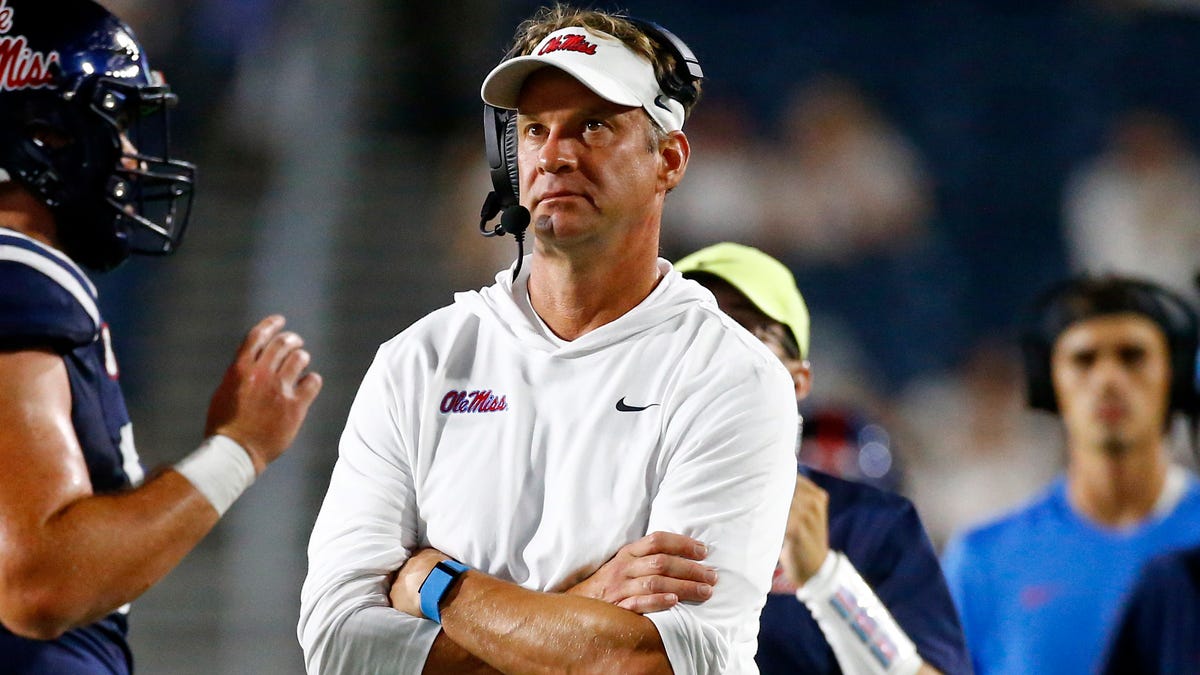College football’s financial frenzy: Everyone from coaches to players, schools, and conferences is cashing in.
Welcome to the captivating world of college football, where everyone is trying to get their share of the pie.
Money flows in and out, and it all finds a destination.
From coaches and players to universities and conferences.
There are also agents, advisors, intermediaries, and, of course, parents reaping benefits too.
It’s a collaborative effort to enjoy the rewards while you can, and how you can, for as long as possible.
Instead of blaming player empowerment or greedy coaches for the significant shifts in college football over the past few years, let’s focus on the obvious reality.
This is a case of financial mismanagement.
As Texas A&M athletic director Trev Alberts pointed out in May: “The issue isn’t revenue in college sports; it’s how we manage our budgets.”
This is where we turn to Appalachian State coach Shawn Clark, a beloved alum and gritty offensive lineman from the ’90s, long before NIL (Name, Image, Likeness) deals and shared television revenues became common.
Clark has an impressive coaching record of 36-18 since 2020. It’s commendable for a coach at the lower levels of the Bowl Subdivision.
His team regularly competes against Power Five opponents, and this Saturday, they will face Clemson, a team still reeling from their previous matchups against Georgia.
“We have a significant challenge ahead,” Clark mentioned during his press briefing. “We essentially have to execute flawless football.”
Here’s an interesting note: Clark will secure $20,000 simply for attending the game.
Buried in the fine print of Clark’s contract lies a sweet incentive system—including substantial bonuses just for meeting certain participation criteria, or in this instance, merely arriving to the game.
Indeed, every match against a Power Five school—a crucial source of income that helps sustain athletic departments—equates to easy cash for Clark.
However, he’s not the only one benefiting from this system, and he’s relatively low on the pay scale. Just how low, you ask?
Take Lane Kiffin, for instance—a top-tier coach who has transformed Ole Miss from being irrelevant to a serious contender for the College Football Playoff within just four years. Last year, the Rebels achieved an unprecedented 11 wins in a single season.
Kiffin truly deserves his compensation.
This season, Ole Miss kicked things off with an incredible performance, scoring an astounding number of points against FCS team Furman, positioning them as one of the leading contenders for the national championship. Kiffin himself stands to gain significantly from a newly restructured contract that rewards performance-based accomplishments.
If Ole Miss secures the national title this season, Kiffin will have met all the contract milestones, earning an additional $4.25 million. I’m no financial expert, but a yearly salary of $9 million combined with a $4.25 million bonus for winning the national title suggests a record-setting payday.
Unless, of course, Georgia coach Kirby Smart—boasting a $13 million annual salary—achieves the targets in his own bonus plan. If that happens, we could be looking at inflated figures that defy logic.
That salary exceeding $13 million is comparable to NFL compensation, setting a new benchmark for college coaches in a single season (apologies to Jimbo and others cashing hefty severance payments).
While performance-oriented contracts have existed for years, the scale and incentives continue to escalate. It’s unfair to blame Smart, Kiffin, or super-agent Jimmy Sexton for maximizing their earnings.
If universities are willing to pay these figures—thanks to soaring media rights revenues—why wouldn’t coaches accept it? If players have the means to switch teams and extract millions, why shouldn’t they take advantage?
When Louisville recruited local star Jeff Brohm from Purdue after the 2022 season, they included a clause in his contract that added two years and $14 million if he won 10 games. Sure enough, Brohm turned the struggling program around and achieved 10 wins in his first season, subsequently adding that $14 million to his original agreement.
Once again, if universities are establishing these financial commitments, why not seize the opportunity?
So, the next time you hear a coach lament about NIL (Name, Image, Likeness) regulations, revenue sharing, or assert that the current NIL setup is “unsustainable”—don’t be misled. It’s thriving, in fact. Don’t be fooled; that’s just a convenient excuse to distance themselves from the reality of college football’s transformation, pinning it on players instead.
This idea is, of course, completely absurd.
Players are thriving while switching teams. Some are cashing in big time, while others face tough adjustments—much like coaches do.
Some athletes earn millions to quarterback large universities, while some coaches earn considerably less to lead smaller programs. The dynamic is determined by market demand and willingness to pay.
Welcome to the land of opportunity, where everyone aims to capitalize on their own potential.
Last year, amidst one of the most contentious championship pursuits in recent history, then-Michigan coach Jim Harbaugh was cashing in on performance incentives.
Despite facing a six-game suspension due to two different NCAA investigations, he still managed to receive incentives.
By the end of the season, after the Wolverines clinched their first national championship since 1997 and Harbaugh fulfilled his commitments, he accrued an additional $3 million in incentives. This brought his total salary to $11.2 million for achieving nine victories as Michigan’s head coach.
Well, all that money has to be spent somewhere.
Why not indulge in a bit of financial folly?
Matt Hayes serves as the lead national college football writer for YSL News Network. You can find him on X at MattHayesCFB.

